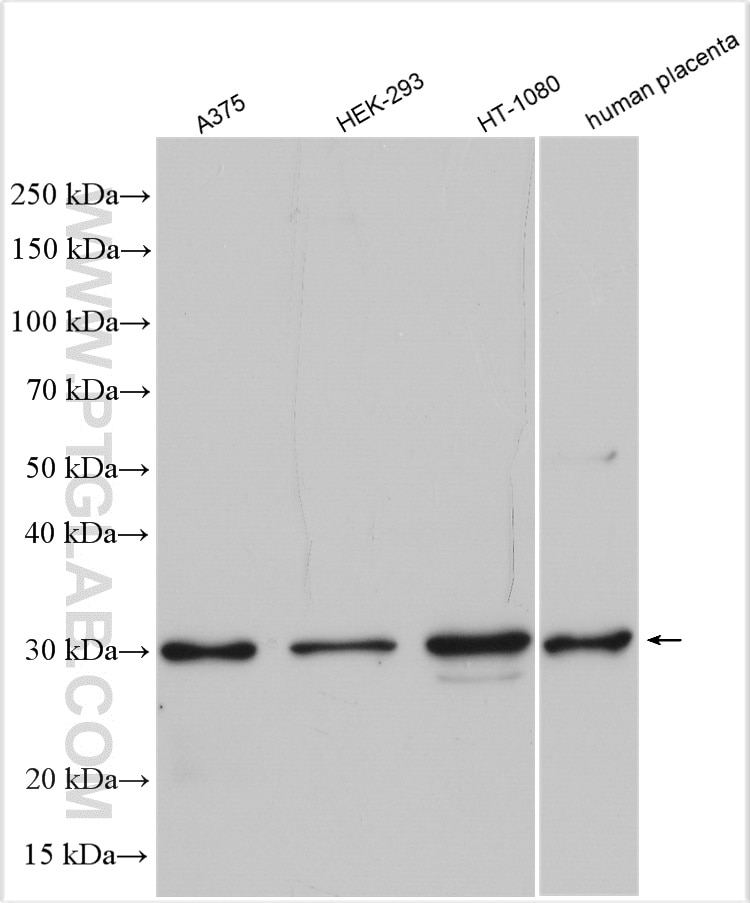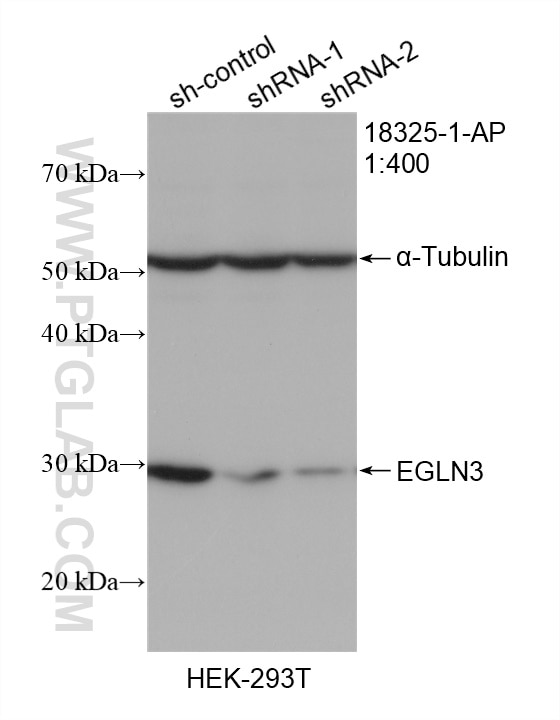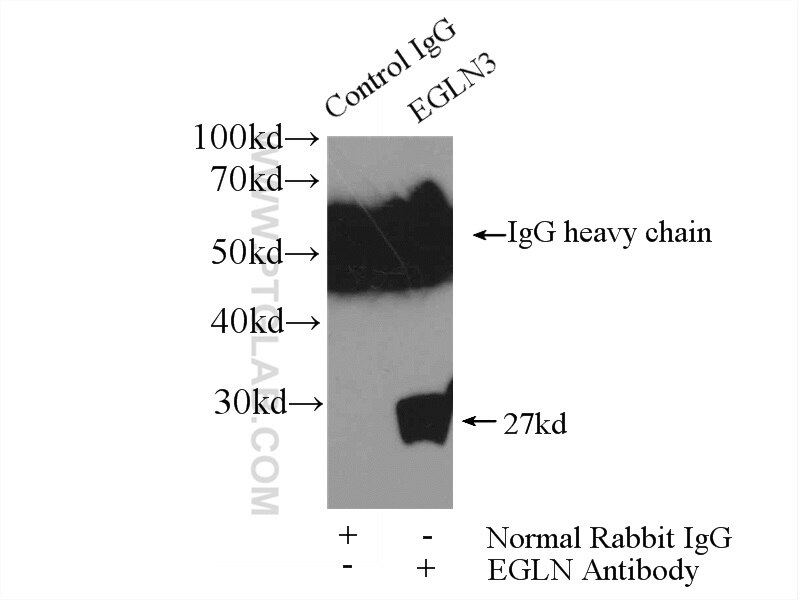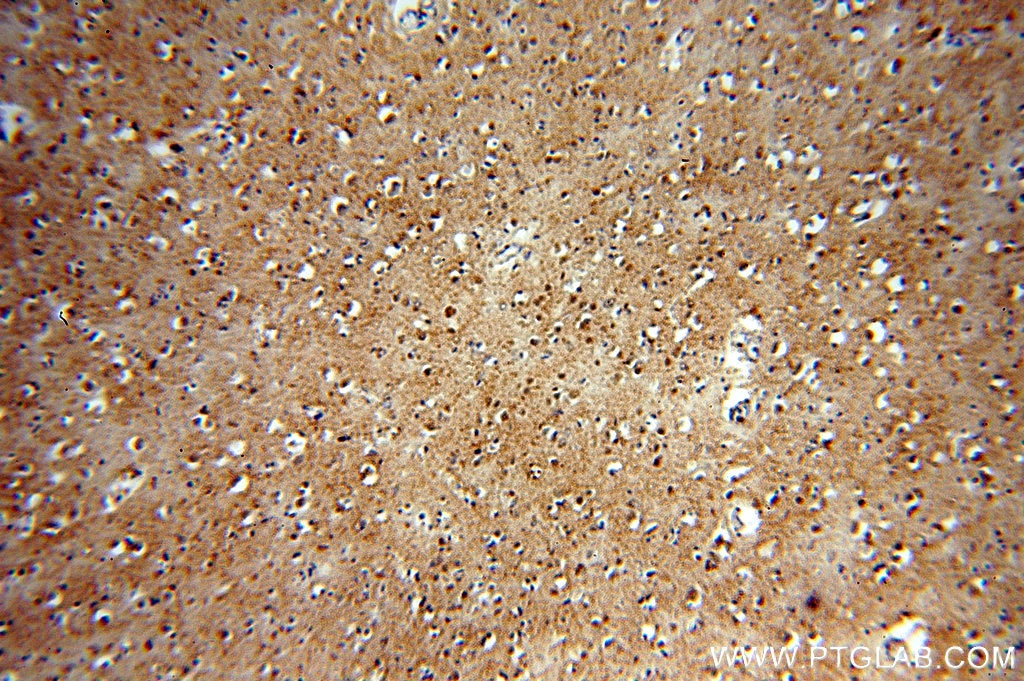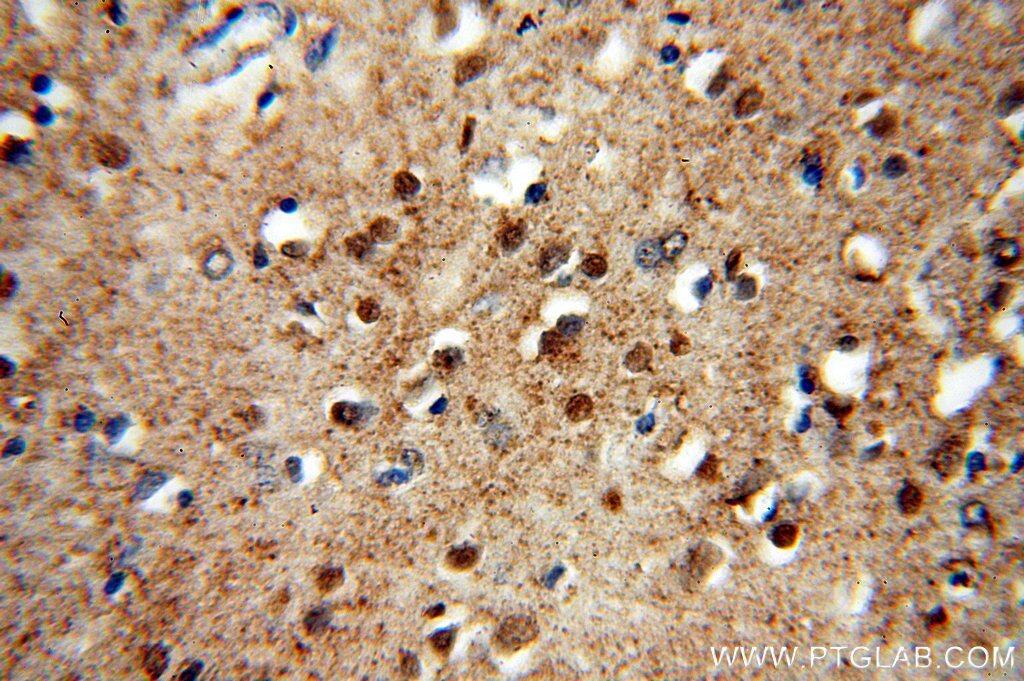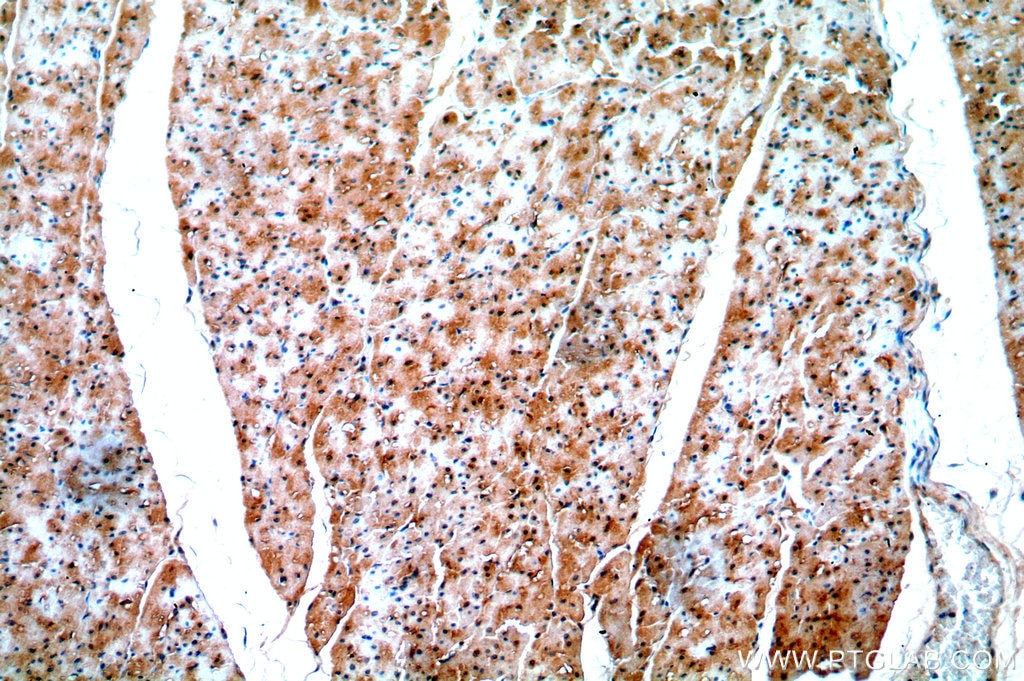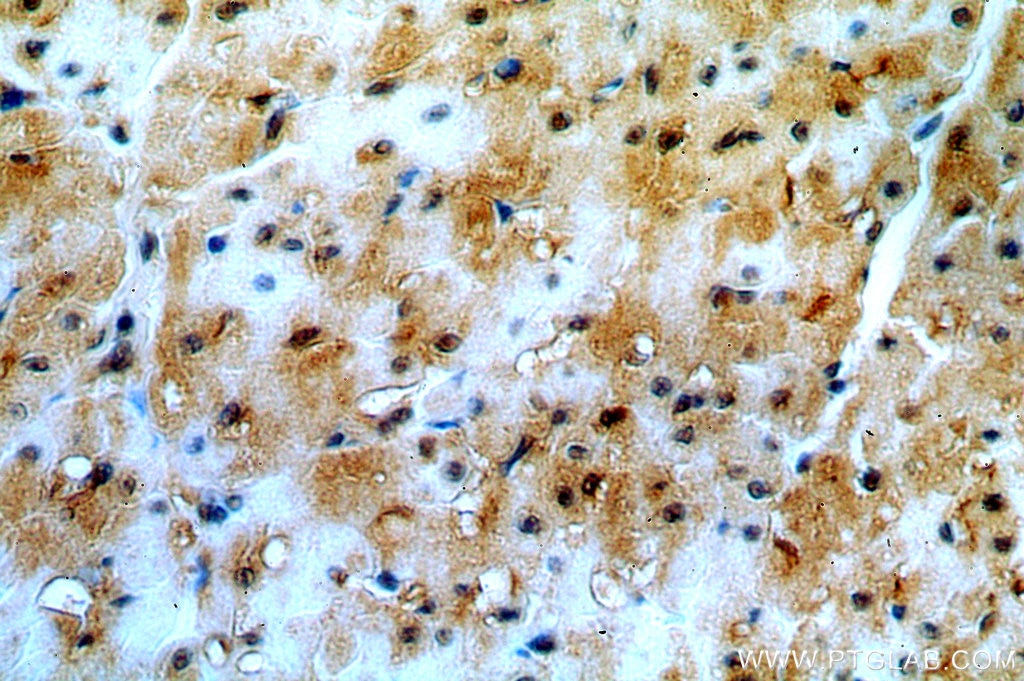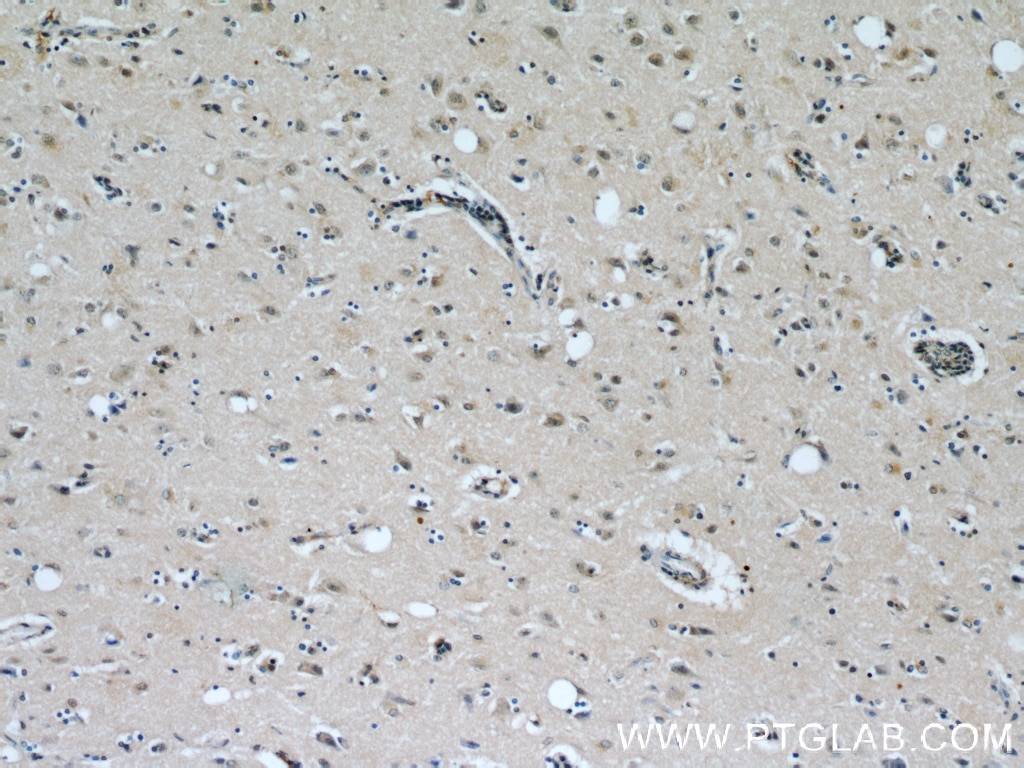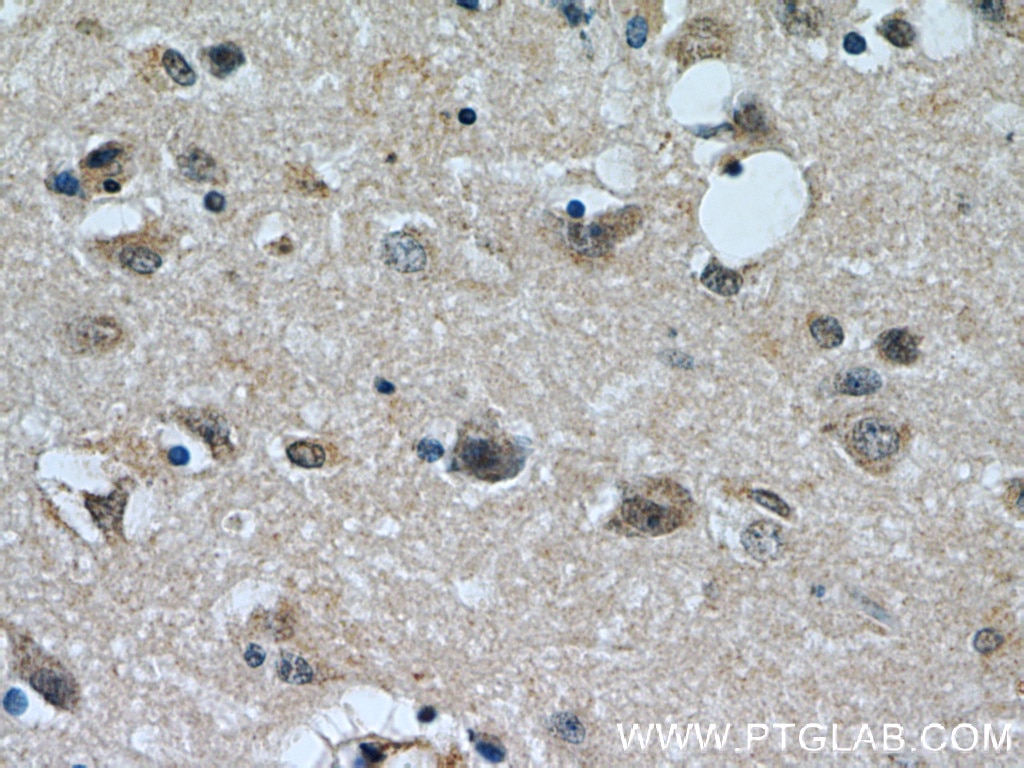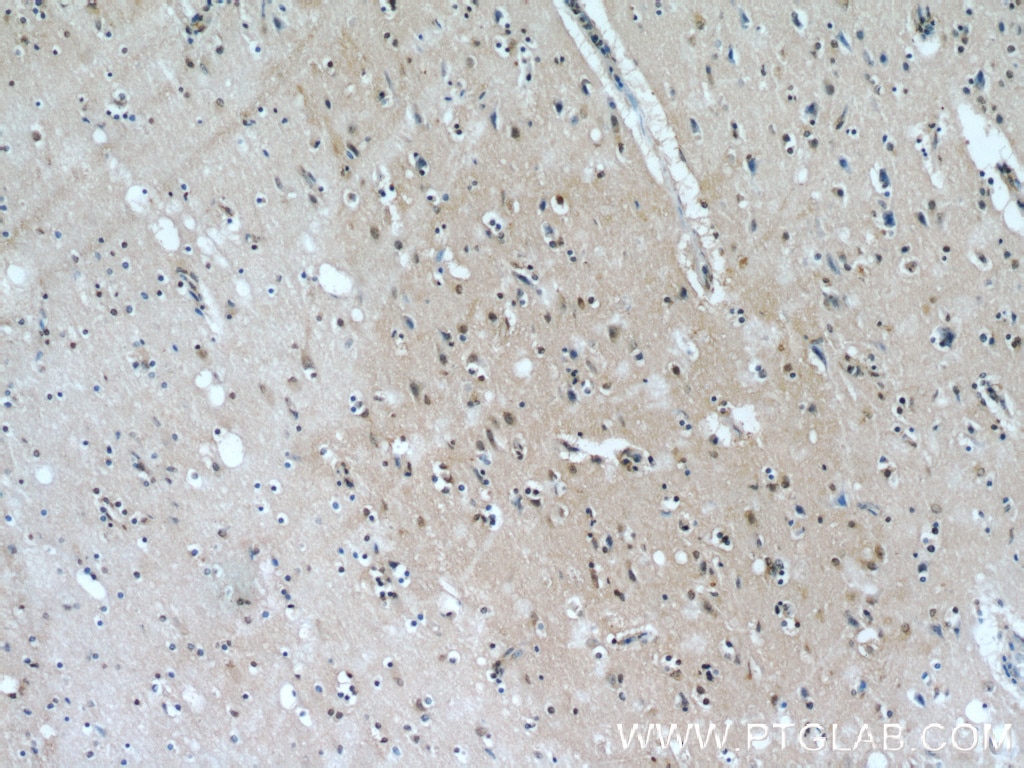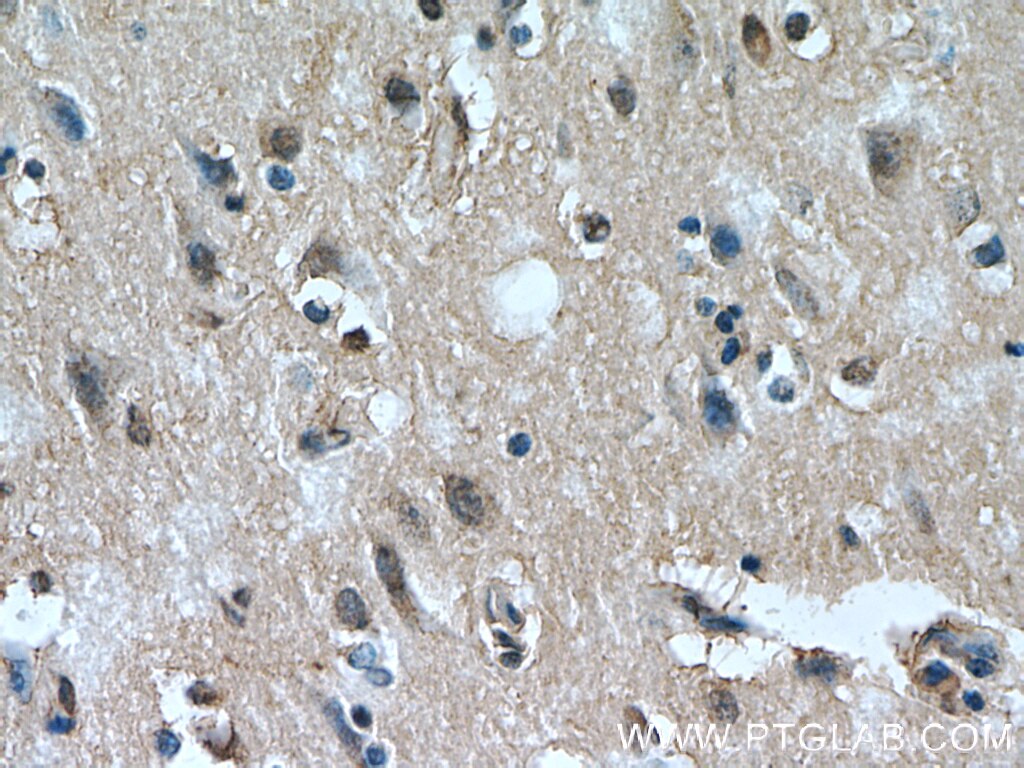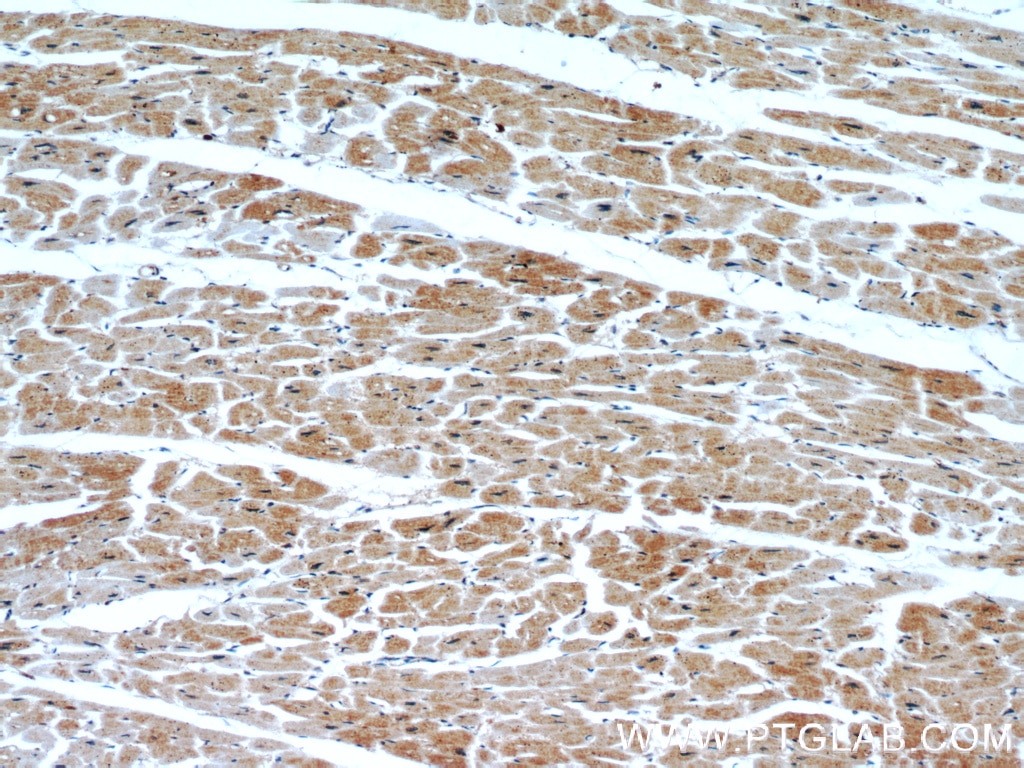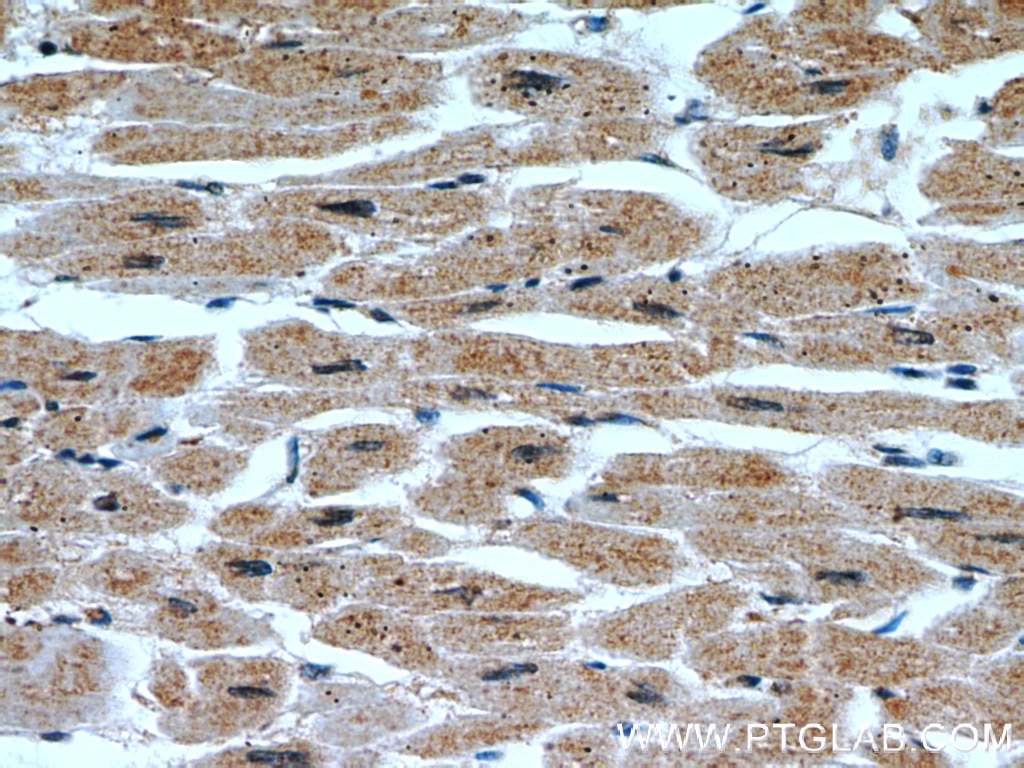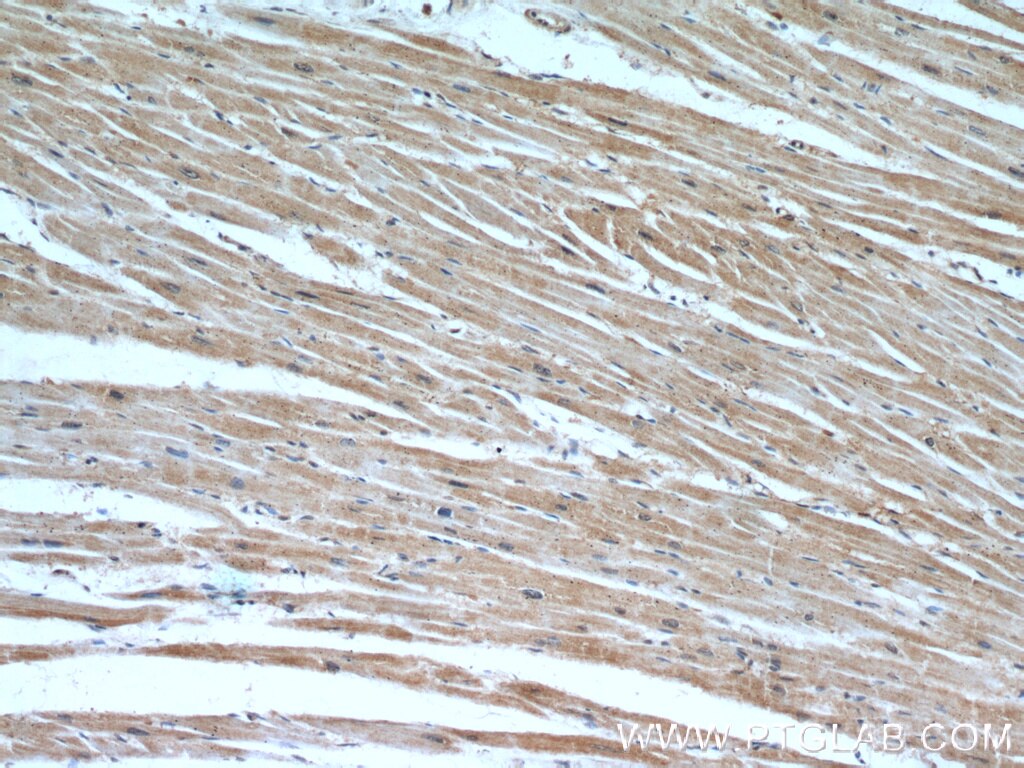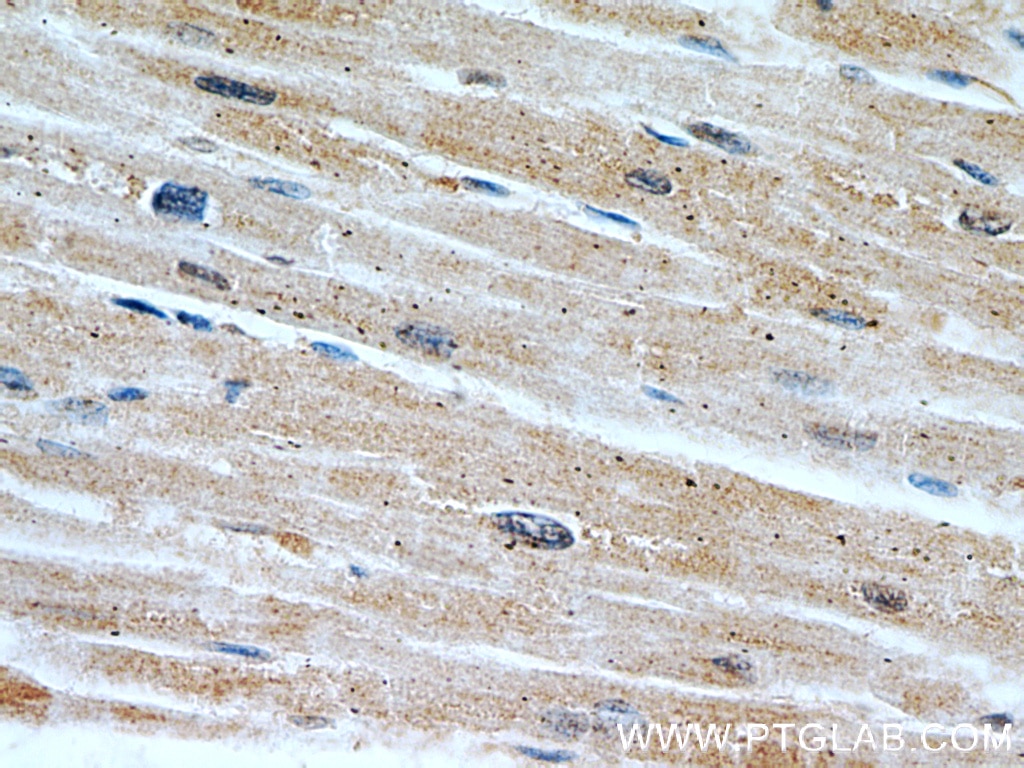- Featured Product
- KD/KO Validated
PHD3 Polyklonaler Antikörper
PHD3 Polyklonal Antikörper für IHC, IP, WB, ELISA
Wirt / Isotyp
Kaninchen / IgG
Getestete Reaktivität
human und mehr (1)
Anwendung
WB, IP, IHC, ELISA
Konjugation
Unkonjugiert
Kat-Nr. : 18325-1-AP
Synonyme
Galerie der Validierungsdaten
Geprüfte Anwendungen
| Erfolgreiche Detektion in WB | A375-Zellen, HEK-293T-Zellen, HEK-293-Zellen, HT-1080.Zellen, humanes Plazenta-Gewebe |
| Erfolgreiche IP | A375-Zellen |
| Erfolgreiche Detektion in IHC | humanes Hirngewebe, humanes Herzgewebe Hinweis: Antigendemaskierung mit TE-Puffer pH 9,0 empfohlen. (*) Wahlweise kann die Antigendemaskierung auch mit Citratpuffer pH 6,0 erfolgen. |
Empfohlene Verdünnung
| Anwendung | Verdünnung |
|---|---|
| Western Blot (WB) | WB : 1:500-1:3000 |
| Immunpräzipitation (IP) | IP : 0.5-4.0 ug for 1.0-3.0 mg of total protein lysate |
| Immunhistochemie (IHC) | IHC : 1:20-1:200 |
| It is recommended that this reagent should be titrated in each testing system to obtain optimal results. | |
| Sample-dependent, check data in validation data gallery | |
Veröffentlichte Anwendungen
| KD/KO | See 2 publications below |
| WB | See 8 publications below |
| IHC | See 4 publications below |
| IP | See 1 publications below |
Produktinformation
18325-1-AP bindet in WB, IP, IHC, ELISA PHD3 und zeigt Reaktivität mit human
| Getestete Reaktivität | human |
| In Publikationen genannte Reaktivität | human, Maus |
| Wirt / Isotyp | Kaninchen / IgG |
| Klonalität | Polyklonal |
| Typ | Antikörper |
| Immunogen | PHD3 fusion protein Ag13197 |
| Vollständiger Name | egl nine homolog 3 (C. elegans) |
| Berechnetes Molekulargewicht | 27 kDa |
| Beobachtetes Molekulargewicht | 27-32 kDa |
| GenBank-Zugangsnummer | BC010992 |
| Gene symbol | EGLN3 |
| Gene ID (NCBI) | 112399 |
| Konjugation | Unkonjugiert |
| Form | Liquid |
| Reinigungsmethode | Antigen-Affinitätsreinigung |
| Lagerungspuffer | PBS mit 0.02% Natriumazid und 50% Glycerin pH 7.3. |
| Lagerungsbedingungen | Bei -20°C lagern. Nach dem Versand ein Jahr lang stabil Aliquotieren ist bei -20oC Lagerung nicht notwendig. 20ul Größen enthalten 0,1% BSA. |
Hintergrundinformationen
EGLN3, also named as HPH-1, HIF-PH3, HPH-3 and PHD3, is a cellular oxygen sensor that catalyzes, under normoxic conditions, the post-translational formation of 4-hydroxyproline in hypoxia-inducible factor (HIF) alpha proteins. It hydroxylates a specific proline found in each of the oxygen-dependent degradation (ODD) domains (N-terminal, NODD, and C-terminal, CODD) of HIF1A. It is a regulator of cardiomyocyte and neuronal apoptosis. EGLN3 can be a prognostic marker for gastric cancer.
Protokolle
| Produktspezifische Protokolle | |
|---|---|
| WB protocol for PHD3 antibody 18325-1-AP | Protokoll herunterladen |
| IHC protocol for PHD3 antibody 18325-1-AP | Protokoll herunterladen |
| IP protocol for PHD3 antibody 18325-1-AP | Protokoll herunterladen |
| Standard-Protokolle | |
|---|---|
| Klicken Sie hier, um unsere Standardprotokolle anzuzeigen |
Publikationen
| Species | Application | Title |
|---|---|---|
Cell Res Hypoxia induces mitochondrial protein lactylation to limit oxidative phosphorylation | ||
Cancer Res Prolyl Hydroxylase 3 Attenuates MCL-1-Mediated ATP Production to Suppress the Metastatic Potential of Colorectal Cancer Cells. | ||
Mol Ther WDR5 facilitates EMT and metastasis of CCA by increasing HIF-1α accumulation in Myc-dependent and independent pathways.
| ||
Asian J Androl CHD1 deletion stabilizes HIF1α to promote angiogenesis and glycolysis in prostate cancer | ||
Bioengineered A novel hypoxia-driven gene signature that can predict the prognosis of hepatocellular carcinoma. | ||
Med Oncol Overexpression of the HIF hydroxylase PHD3 is a favorable prognosticator for gastric cancer. |
